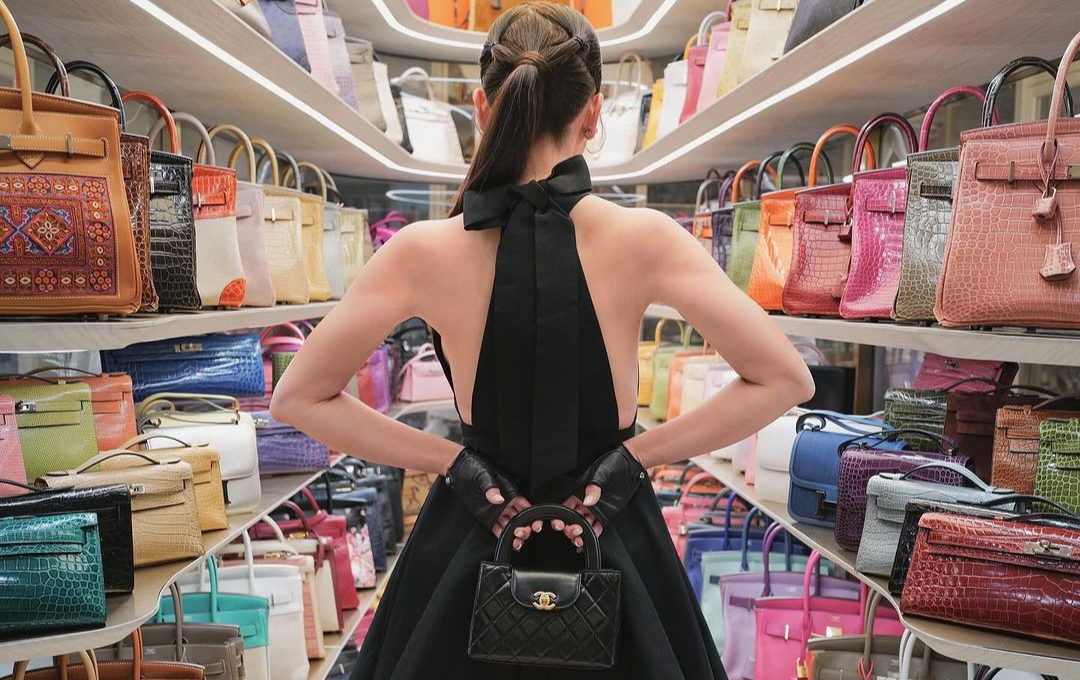
Why the Wealthy Wear Replicas: The Smart Approach to Luxury Bags
Thea Elle
Mar 17, 2025
The ultra-rich don’t just buy HERMÈS, CHANEL, or LOUIS VUITTON bags to wear—they buy them as assets. These bags, especially Birkins and Kellys, appreciate in value, making them more like stocks or fine art than fashion accessories. The idea of carrying a $50,000 HERMÈS BIRKIN on a crowded street seems ridiculous when you consider how serious collectors store theirs in temperature-controlled vaults.
This isn’t just a modern trend. Wealthy investors have long treated luxury goods like traditional investments. Just as billionaires store their PICASSOS and BASQUIATS in Swiss freeports, many serious collectors keep their CHANEL Classic Flaps or HERMÈS Birkins locked away, untouched. Every scratch, scuff, or spill devalues these assets, making daily use a financial liability.
So, what do they carry instead? Replicas. Yes, even those who can effortlessly drop six figures on a handbag often opt for a high-quality fake in everyday life. Why? Because it’s the logical choice.

Where the Real Investment Bags Live
THE WEALTHY UNDERSTAND ASSET PROTECTION
To the untrained eye, a HERMÈS Birkin is just an expensive handbag. But for those in the know, it’s a high-performing financial asset. Auction houses regularly see rare Birkin sell for over $100,000, and the resale market for luxury bags continues to thrive.
This is precisely why serious collectors don’t risk carrying them. A single coffee spill can wipe out thousands in resale value. Sun exposure can cause irreversible fading. Daily wear? A nightmare. Instead of gambling with their investments, they store them safely and turn to replicas for daily use.
Meanwhile, the average consumer spends their life savings—or worse, goes into debt—to own a real LOUIS VUITTON Neverfull, just to parade it in public. Ironically, the very people who can afford authentic luxury without financial strain are the ones using high-quality fakes, while their originals sit protected in a vault.
WHY REPLICAS MAKE SENSE FOR EVERYDAY USE
Wearing an authentic luxury bag daily involves more than just wear and tear—it comes with security risks. Theft is a growing issue in major cities, with snatch-and-grab crimes targeting luxury bag owners on the rise. A Birkin or a CHANEL Classic Flap isn’t just an accessory; it’s a visible wealth indicator, making its owner an easy target for thieves.

The Risk of Carrying an Expensive Bag in Public
THE STIGMA OF REPLICAS: WHO REALLY CARES?
Luxury brands invest millions into reinforcing the idea that authenticity is everything. But let’s be honest—who benefits from that mindset? The brands themselves. Outside of resale markets and collector circles, no one is stopping strangers to verify if a CHANEL Classic Flap is genuine.
In reality, many wealthy individuals openly wear replicas while keeping their originals pristine. They recognize that in social settings, the perception of luxury matters more than the actual authenticity of the item.

Let’s not forget, luxury itself is a manufactured illusion. The same brands that preach exclusivity and craftsmanship are also the ones mass-producing items in factories, outsourcing labor, and quietly increasing production to meet soaring demand. The narrative of scarcity and prestige is carefully curated to justify exorbitant prices, yet the core appeal of these products remains the same: they serve as social signals. Whether real or fake, a CHANEL Classic Flap still conveys wealth, status, and taste to the casual observer—proving that, in the grand scheme of things, authenticity is just another marketing tool.
LUXURY AS AN ILLUSION: IT’S ALL ABOUT PERCEPTION
The power of luxury doesn’t lie in the physical item—it lies in what people believe it represents. A HERMÈS Birkin doesn’t need to be real to turn heads; it just needs to look like one. The illusion of exclusivity is what makes luxury so desirable. Most people aren’t meticulously analyzing the stitching, leather quality, or embossing of your handbag under a microscope. Instead, they’re making split-second judgments based on branding, design, and the status signals luxury items project.
The reality is, in a world where logos and aesthetics dictate perceived value, authenticity becomes secondary. A well-made replica can achieve the same effect as the original, satisfying the desire to showcase wealth and sophistication without the financial burden. At the end of the day, luxury is more about perception than possession—what matters isn’t whether your bag is real, but whether it convinces others that it is.

The LOUIS VUITTON Neverfull: Everyday Elegance
SMART MONEY WEARS REPLICAS
Luxury brands want you to believe that authenticity is everything—because they profit from that belief. But those who understand wealth preservation see through the illusion. Their HERMÈS Birkins aren’t stuffed into gym lockers or slung over restaurant chairs—they’re stored in safes, appreciating in value, while replicas handle the daily grind.
So, who’s really winning? The person risking their $20,000 handbag on the street, or the one keeping theirs safe while carrying an identical-looking $500 replica? The answer is obvious.

